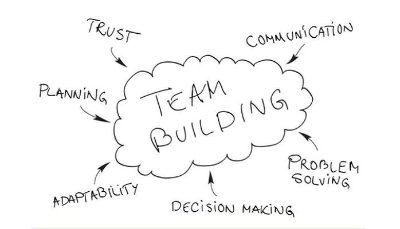Bir uzmanın yayınladığı bir ileti gördüm. Site tasarlarken kesinlikle yapılması ve yapılmaması gerekenleri yazmış. Çok tecrübeli olduğum bir konu değil yalnız etkileyici buldum. Faydalı olabileceğini düşündüm. Blog’lar için değil belki ama e-ticaret, haber siteleri, sosyal ağ siteleri gibi projelerde dikkat edilmesi gerekir. İşinize yaracağını düşünüyorum o yüzden paylaşıyorum.
Orijinal yazı burada…

I found a post from an expert that recommends DOs and DON’Ts.. Maybe these rules are not available for Blogs but e-commerce, technical news or social networking sites that have members over thousands.. Let you take a look on those. Sure, they will be useful for one day at anywhere.. I found that It is valuable to publish here.
If you do it right, your website can be the best marketing tool you have. Ilya Pozin, founder of the Web design firm Ciplex, on how not to screw it up.
 I’m continually surprised by how many people call my design company with very firm ideas about what they want on their business website and yet, they haven’t thought through some of the most basic questions first. For this reason, our first question is always “Why do you need a site?,” not “What do you want on it?”
I’m continually surprised by how many people call my design company with very firm ideas about what they want on their business website and yet, they haven’t thought through some of the most basic questions first. For this reason, our first question is always “Why do you need a site?,” not “What do you want on it?”
At bottom your website is a marketing tool. For many businesses, it’s the only source of business. If done right, it can be a major part of yours.
Here’s my quick-hit list of the top dos and don’ts before you get started:
Do:
- Set smart goals. And make sure they’re measurable. Here are a few great ones a Web designer wants to hear: increase conversion rates, increase sales, generate more leads, reduce overhead, and improve brand awareness.
- Plan on becoming an SEO wizard. Sure, you’re going to want help from the pros and eventually you might even need your own in-house SEO expert, but search engine optimization is something you need to know about too. It has one of the highest ROIs in marketing. Plus, do it right and SEO can literally put your marketing on autopilot, allowing you to focus on improving the quality of your business, instead of figuring out how to bring in customers to your site. Start readingSEOmoz and stay up to date with SEO changes by reading sites like search engine land.
- Use open source tools. You could go with a proprietary content management system (CMS) but that means you’re typically stuck with one company and paying hefty license fees to boot. Do yourself a favor and go with an open-source system—I like WordPress and Magento—that any developer can access.
- Think about your mobile strategy simultaneously. Research the percentage of your visitors that are likely to use mobile devices to access your site. If it’s high, you may want to consider building a separate mobile version of your site, or even an app. If it’s relatively low, just make sure your website works on smart phones, but don’t invest into a mobile version.
- Steal from your competitors. Before you build your site, check out your competitors and write down the things they do well. If you like the look and feel of another site, there’s no reason not to start with something you like and then make it your own.
- Develop your content. The biggest slow-down in the Web design process is content. If you’re going to sell products on your site, get product photos and product descriptions ready. If you sell services, you’ll need a description of each service. Get as much of your content together before you start building your site—it will save you weeks. And while you’re at it…
- Write with calls to action in mind. Good calls to action allow visitors to quickly decide what they want to do next. Having a big sale? Don’t just write a banner that says “50% off all products.” Write one that says “50% off all products, CLICK HERE to view them.”
- Always answer the question “why?” Have you ever walked up to someone you’ve never met, handed them a business card, and walked away without saying a word? Likely not. If you want people to do something on your website, such as sign up for your newsletter, don’t just put up a box that says “enter email” or even “sign up for newsletter”—you’ll get a very weak conversion rate. Tell them why they should do it: “Sign up for our newsletter to receive weekly specials.” Same thing goes for Twitter and Facebook logos. Just putting them up isn’t smart. Tell people why they should follow you on Twitter or friend you on Facebook. What will they get out of it?
- Trust your Web designer. I tend to see the worst end results with customers who come in with a “I know what I want, just do what I tell you” attitude. You hired an expert because they know more than you, right? Let them do what they do best and they’re more likely to meet and often exceed your goals.
Don’t:
- Do it yourself. I know—I run a Web design firm, so of course I’m going to say this. But seriously, your website is often where your customers’ first experience your brand. If it looks homemade, they’re going to make assumptions about your business that you want to avoid.
- Make people think. When visitors come to your website, they typically already know what they want out of it. Do a three-second test: If within three seconds a visitor can’t figure out what to do next, go back to the drawing board.
- Expect visitors. Lose the “if you build it, they will come” mentality. Simply putting up your site will not result in any visitors.
- Spend all your money. Don’t max out your entire budget on the website. You can get a well-designed site for under $1,000 from a freelancer, or a few thousand dollars from a professional agency. And you can always make improvements as your business grows. It’s far more important initially to have some money left over for a marketing budget so you can actually make a return on your investment.
- Add a blog. Are you really going to write posts? Be honest. If you won’t, then forget about a blog. A website with an outdated blog can create the perception that your company is small or even out of business.
- Add Twitter and Facebook buttons. If a potential client clicks through to your social pages and sees hardly any followers, they may lose trust in you. First build up your social presence, then commit to posting and engaging your fans on a regular basis, and only then promote them on your website. Also keep in mind that some businesses simply don’t belong on Twitter or Facebook.
- Try to please everyone. Your website will be a mess if you try to accommodate every type of visitor who might come along. Figure out who is likely to be your most frequent users and focus on creating the best experience for them.
- Add testimonials. Building credibility is important, but too often testimonials sound fake. “’They are great!’ says John Smith” simply isn’t believable. If you’re going to have testimonials make sure they are specific, and something people can relate to.
- Use Flash. Some sites still need it, but if you can, avoid it. Adobe just announced that it will no longer support Flash on mobile devices and set-top-boxes. The last thing you want is for a potential customer to be unable to open your site.
- Expect a killer website overnight. Good websites take time to build. If you want the best results out of your site, be prepared for several months of work.

